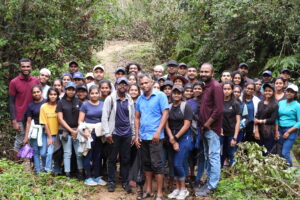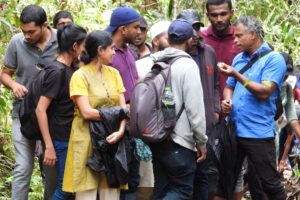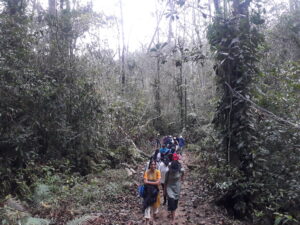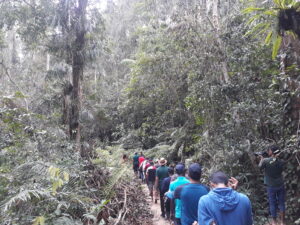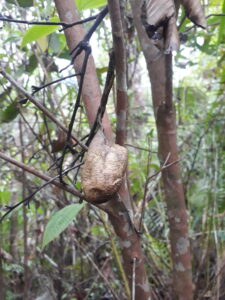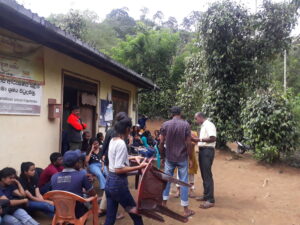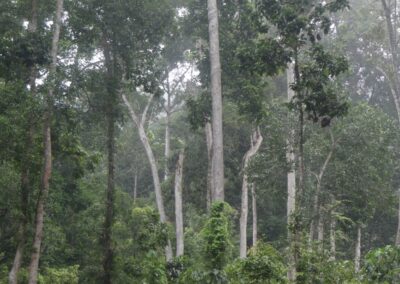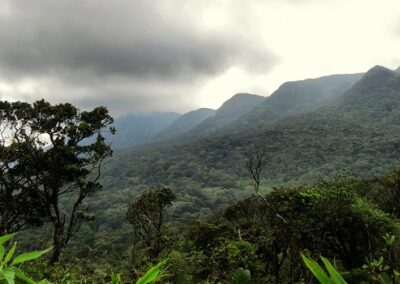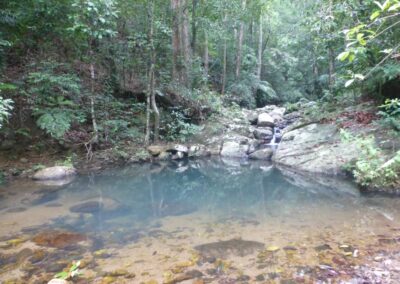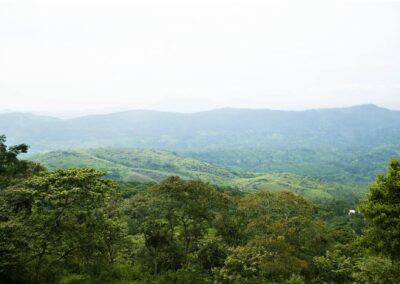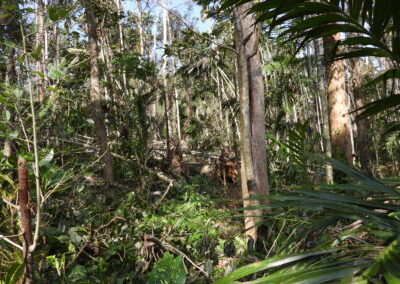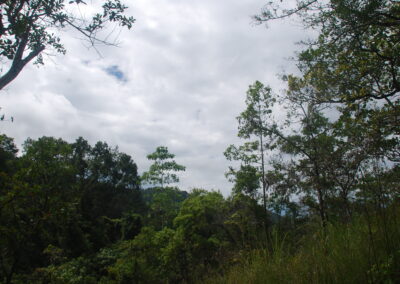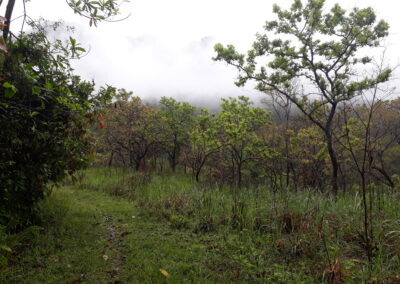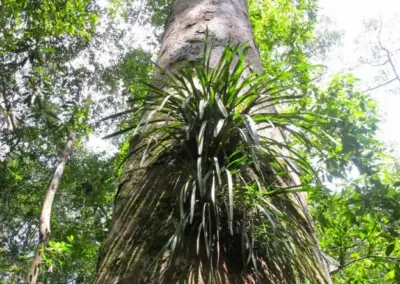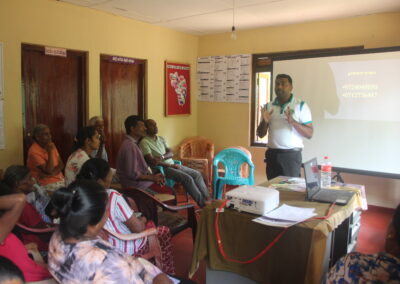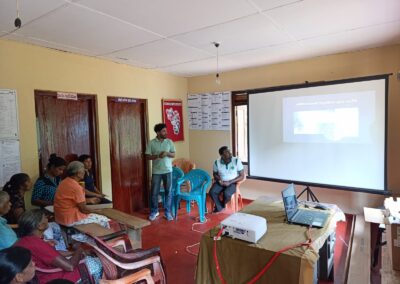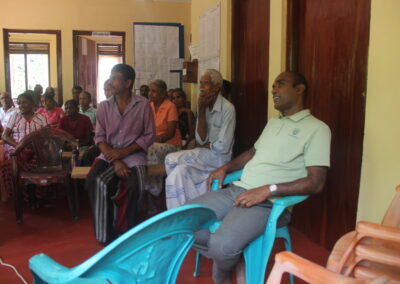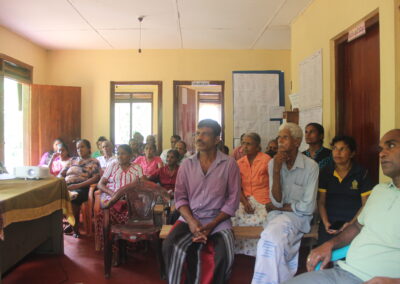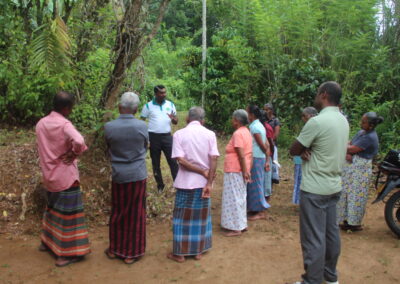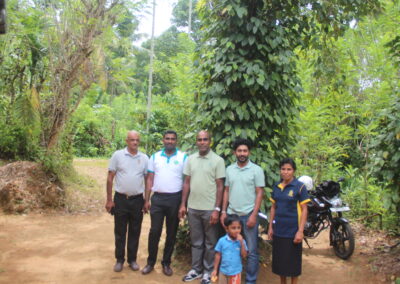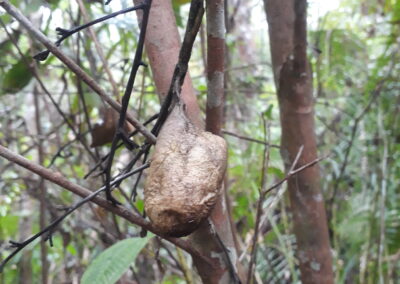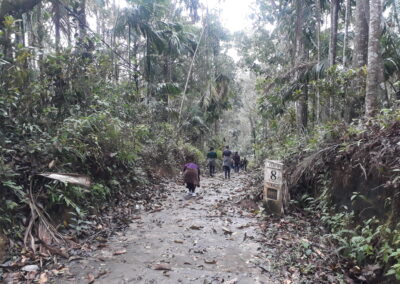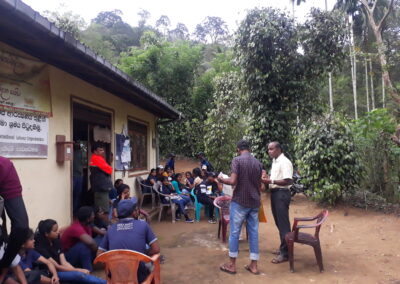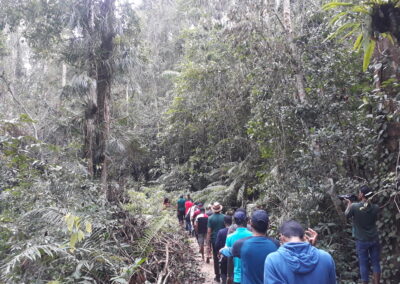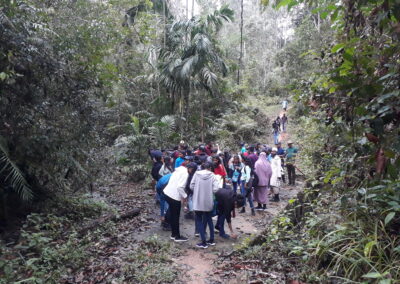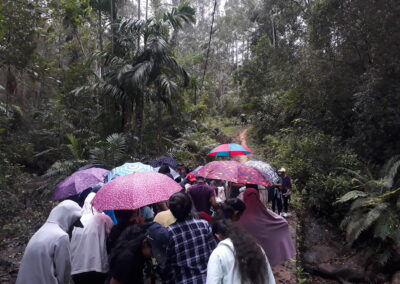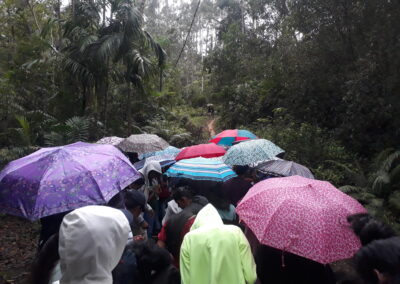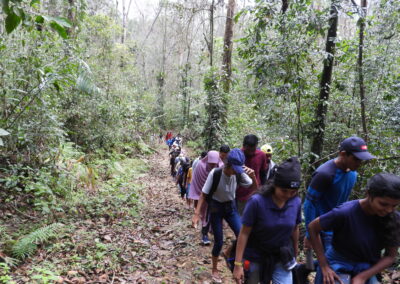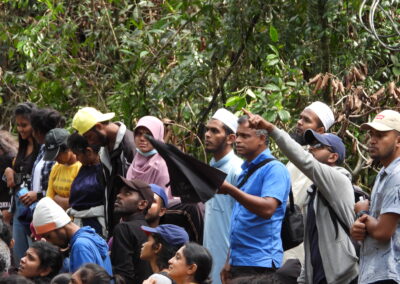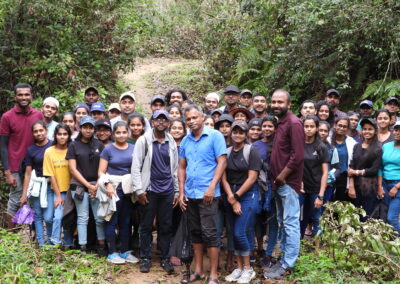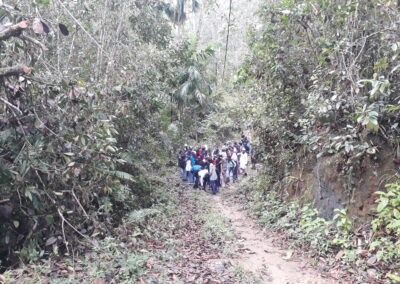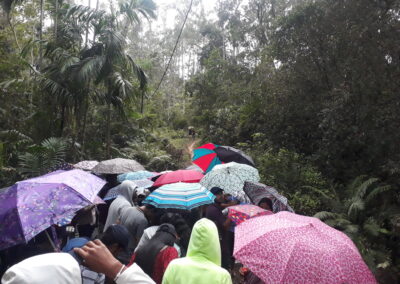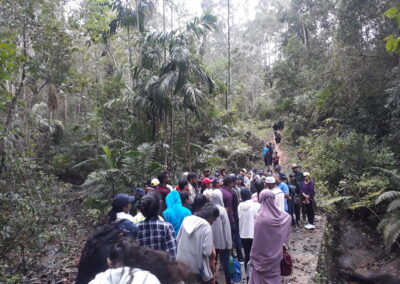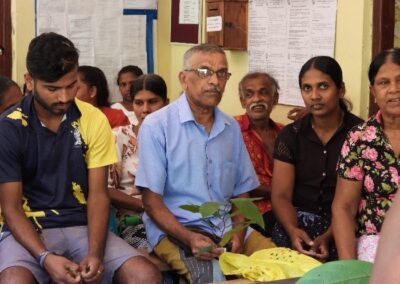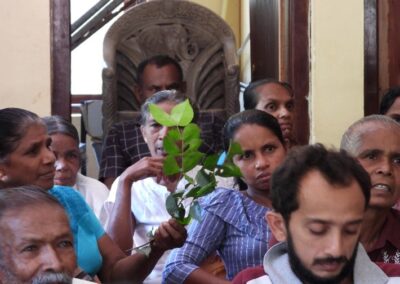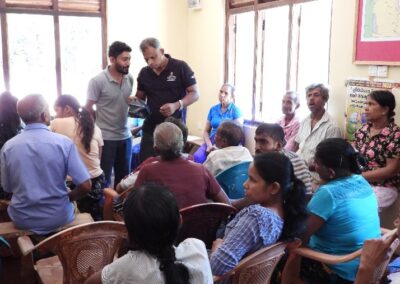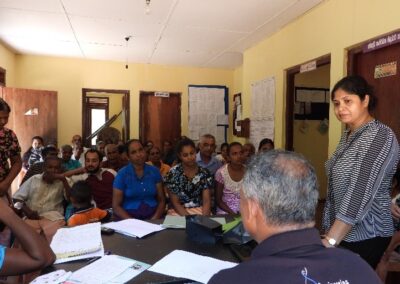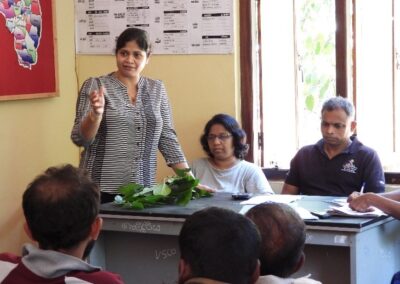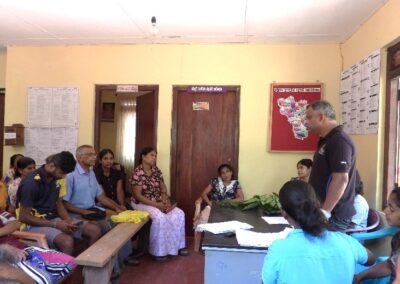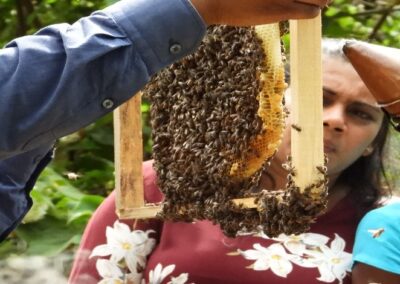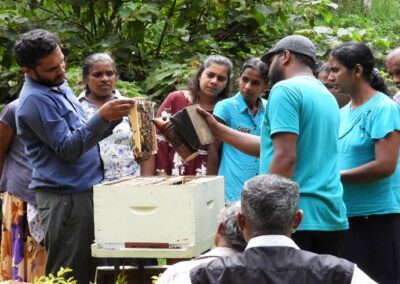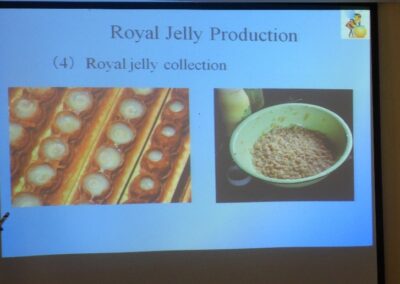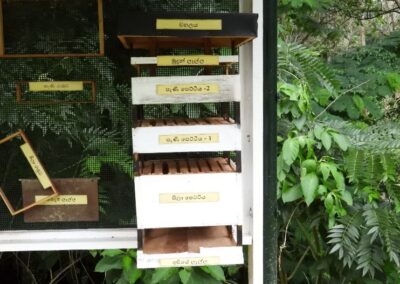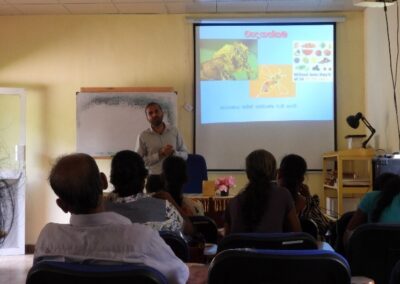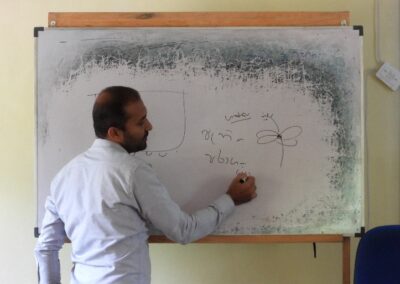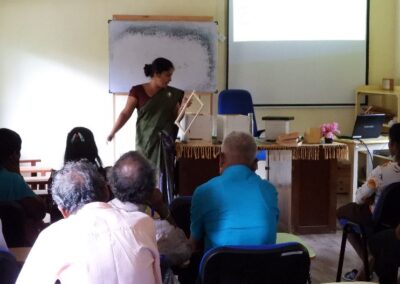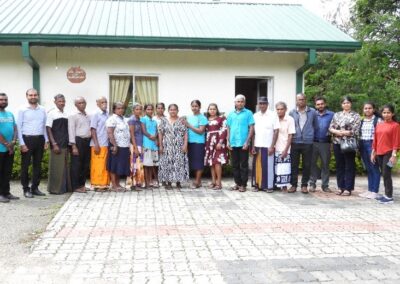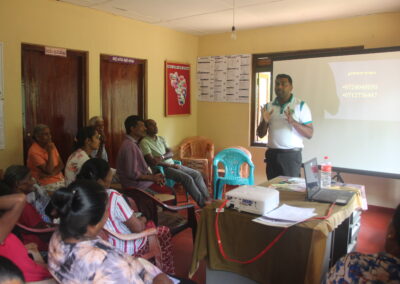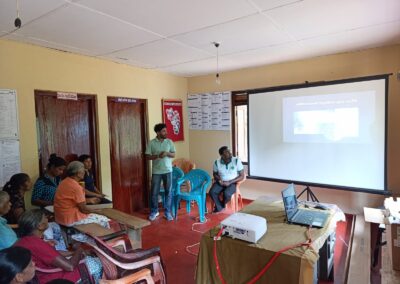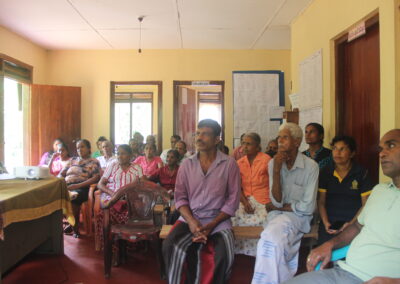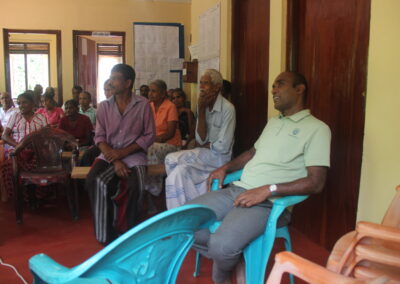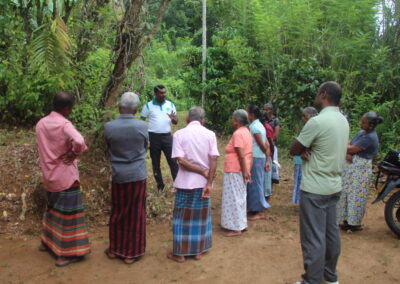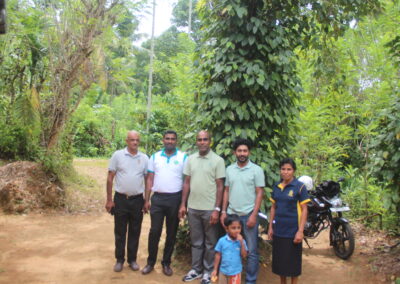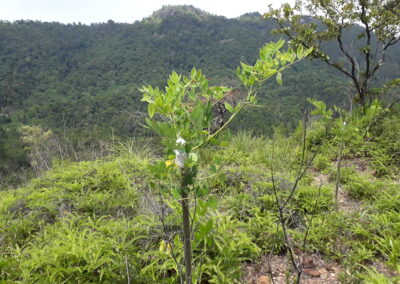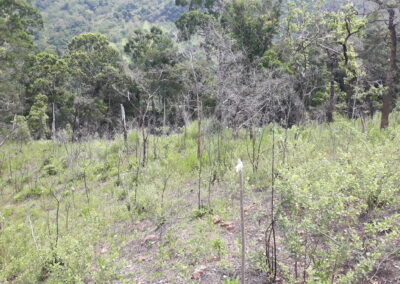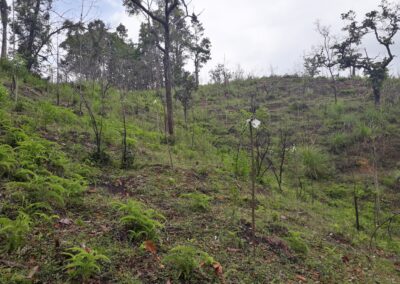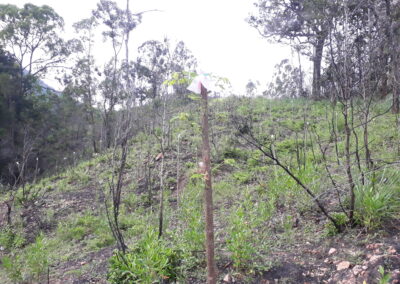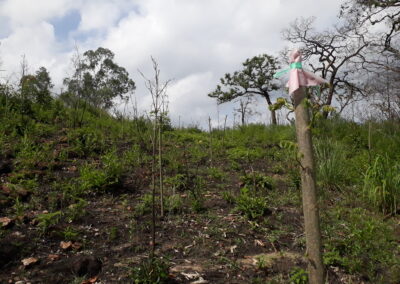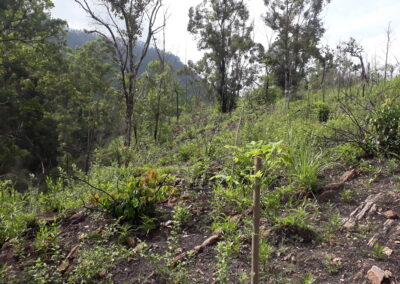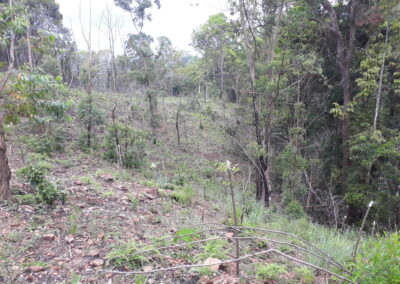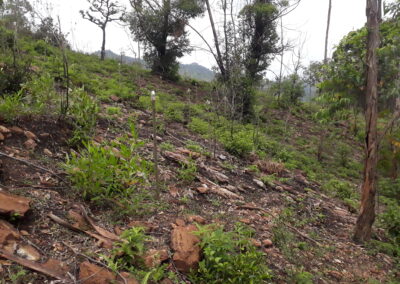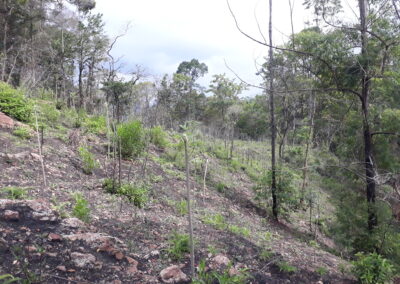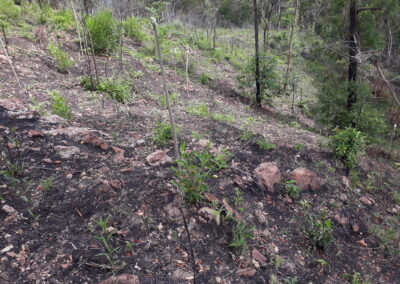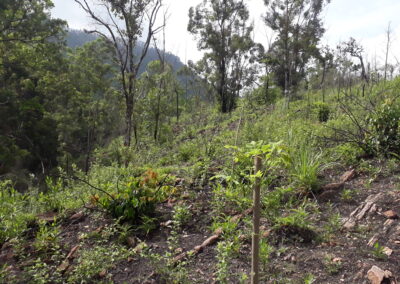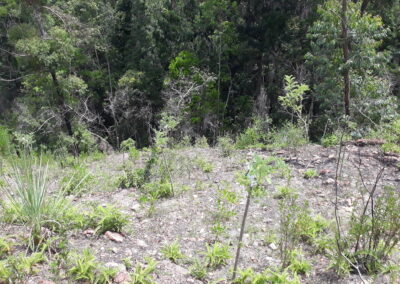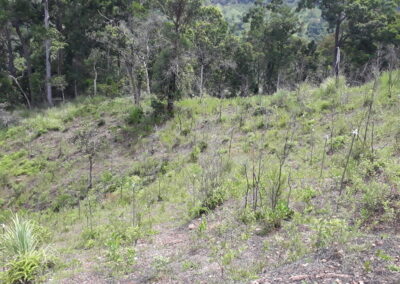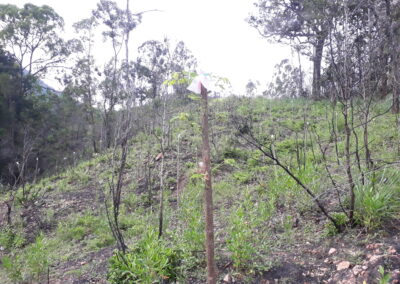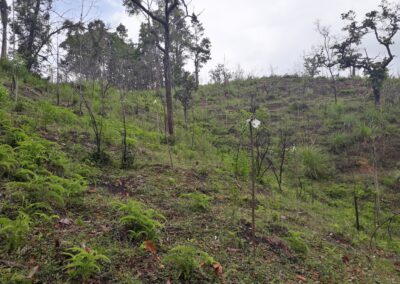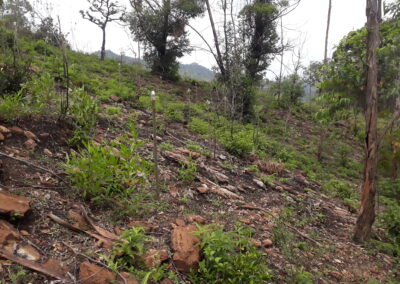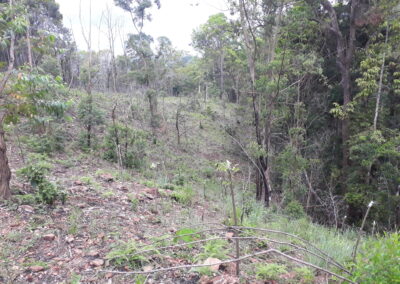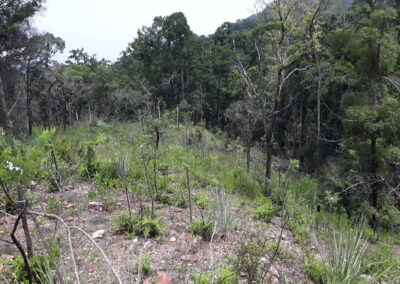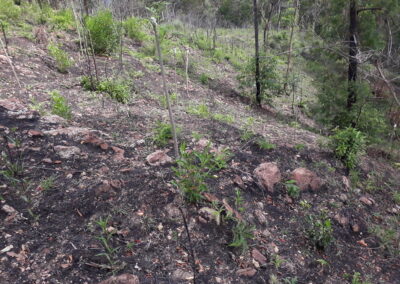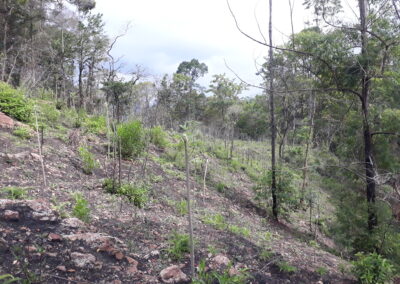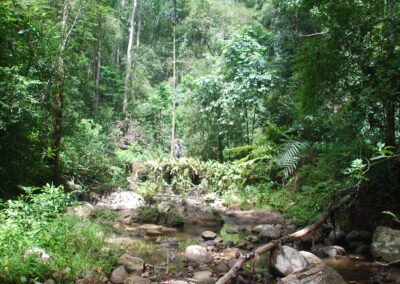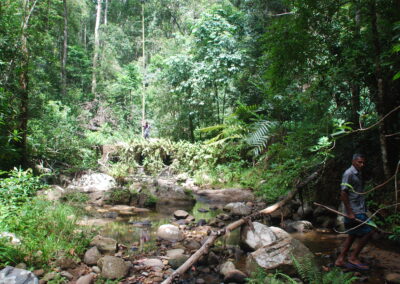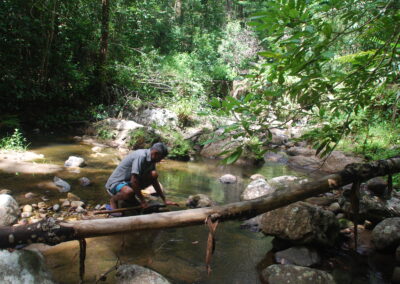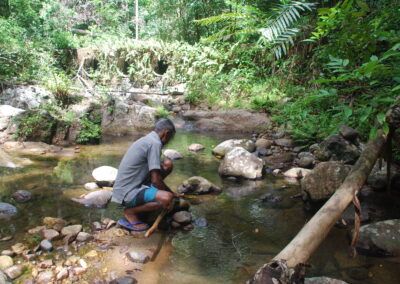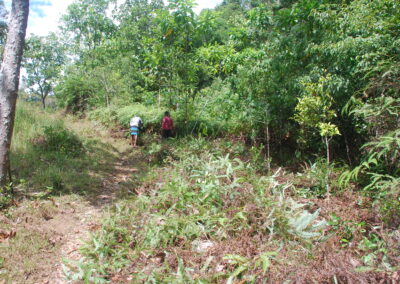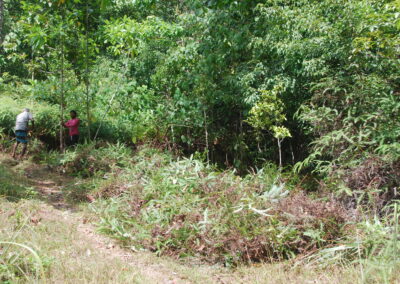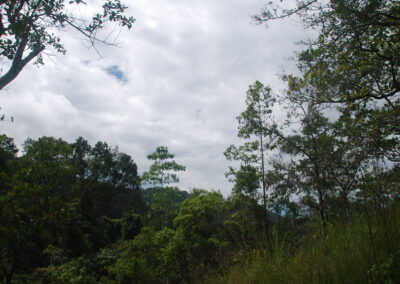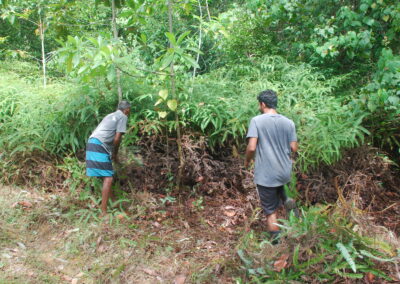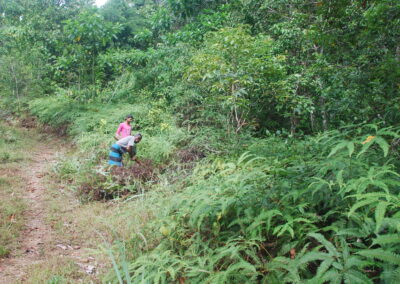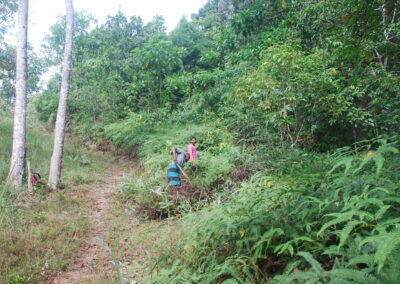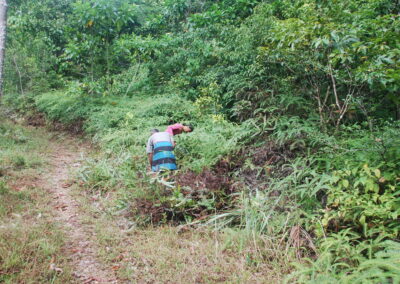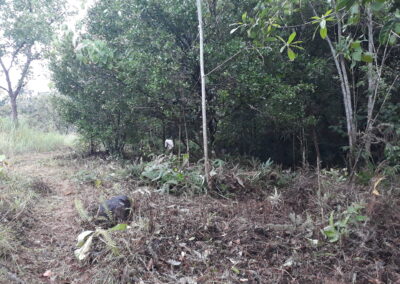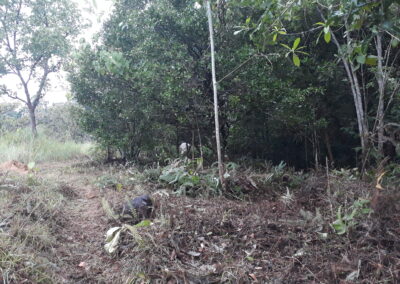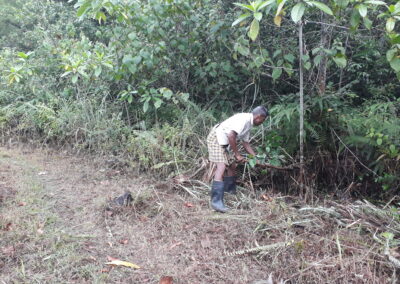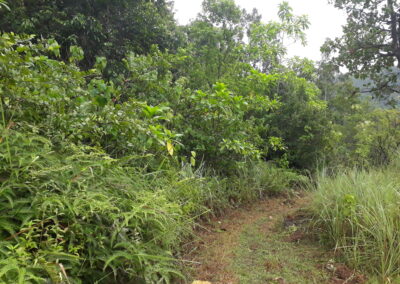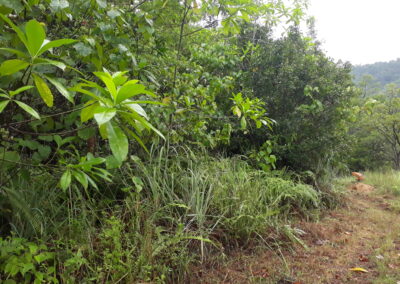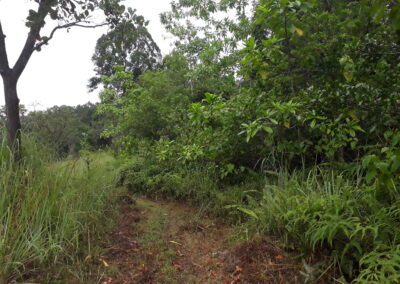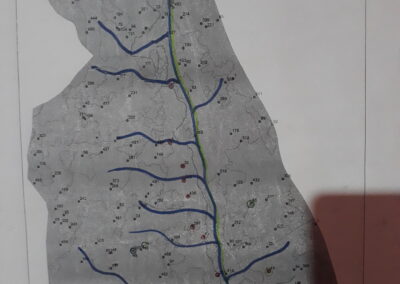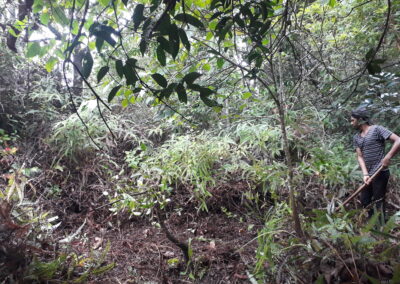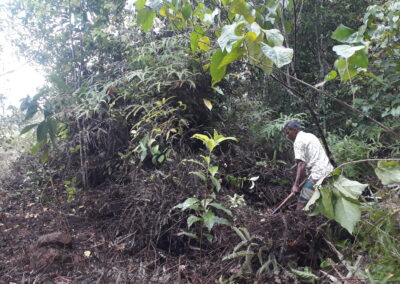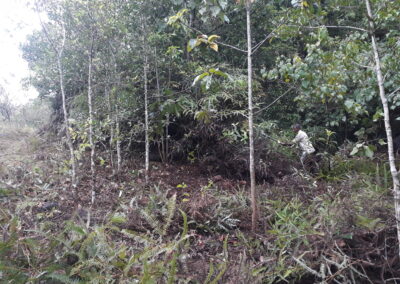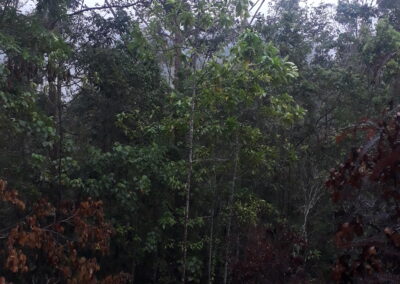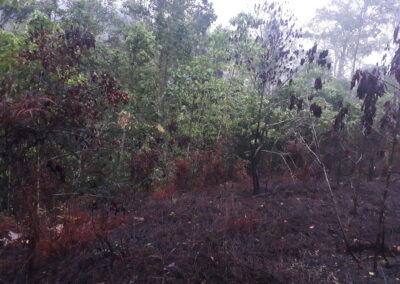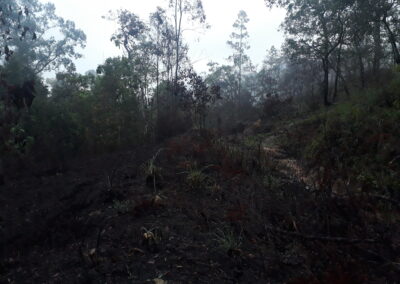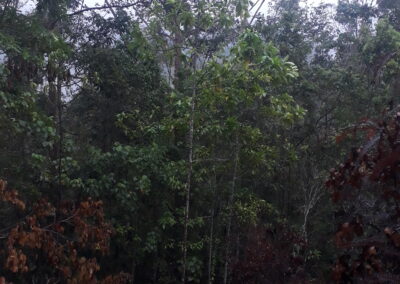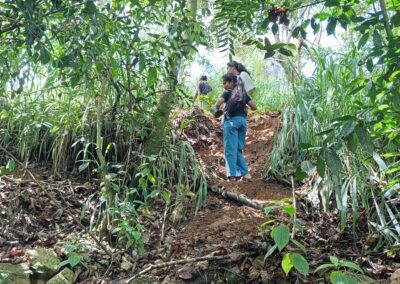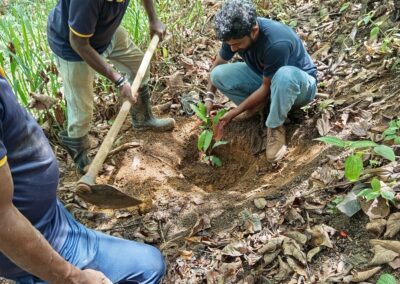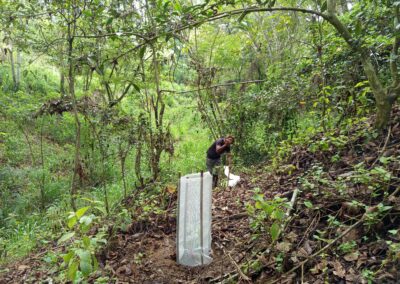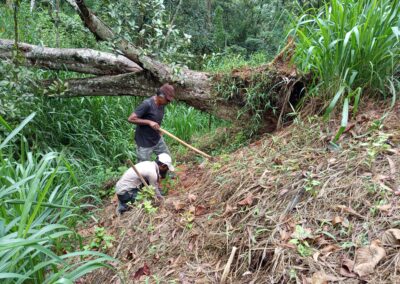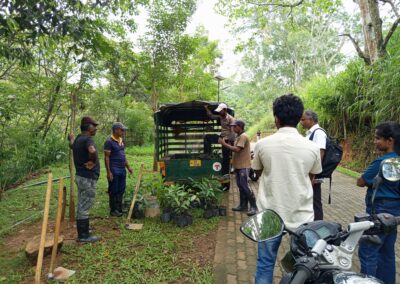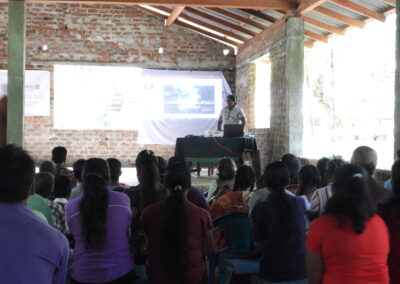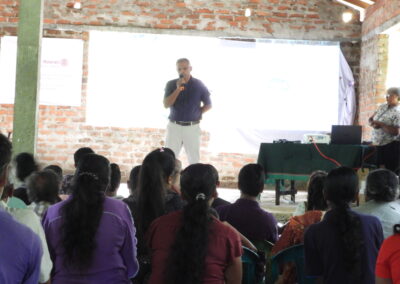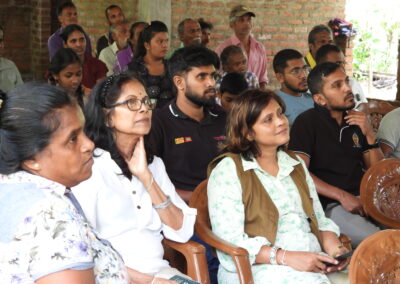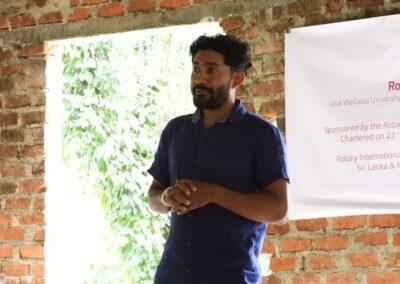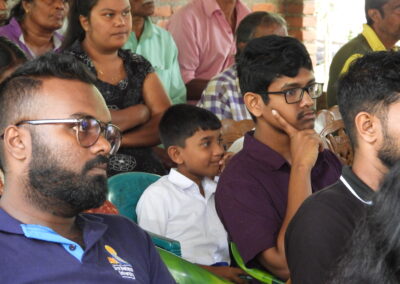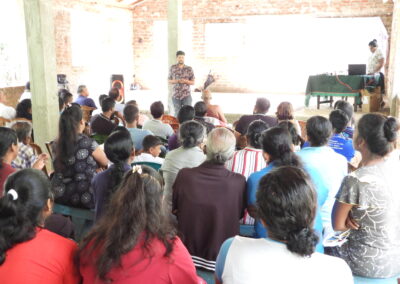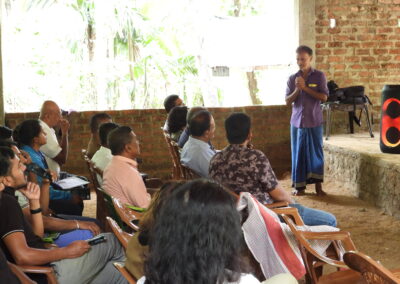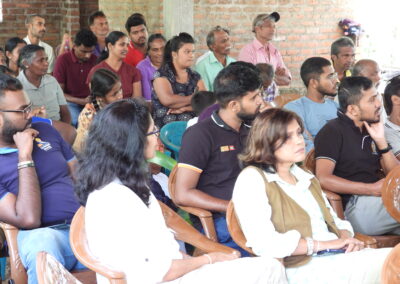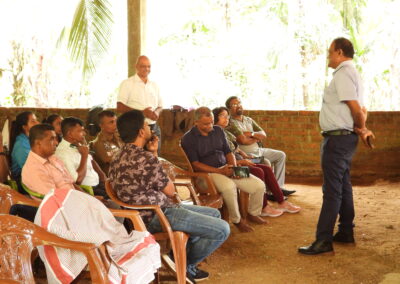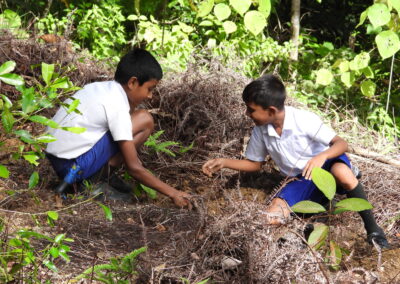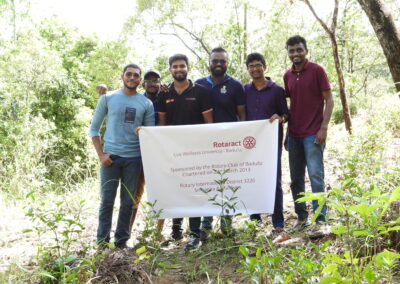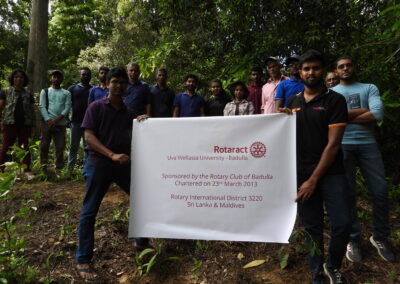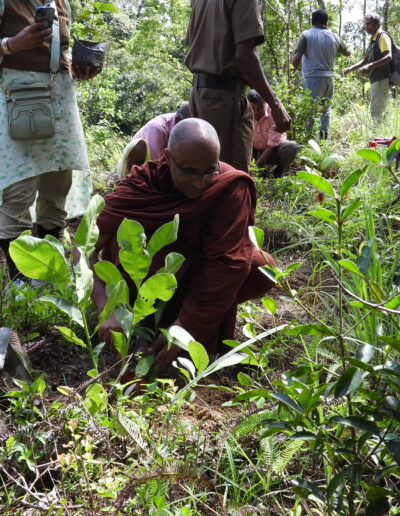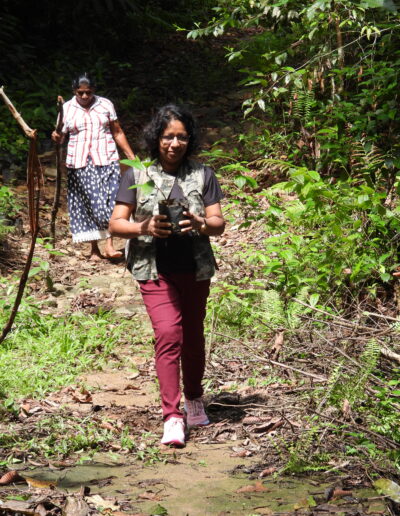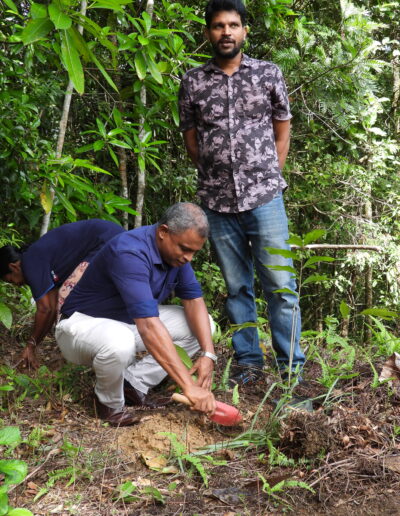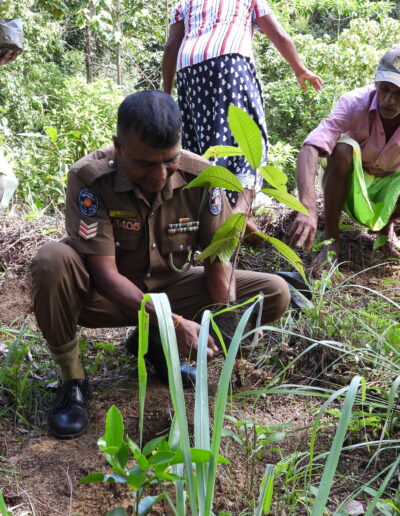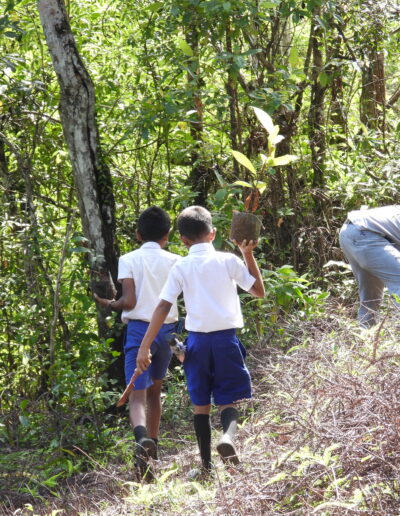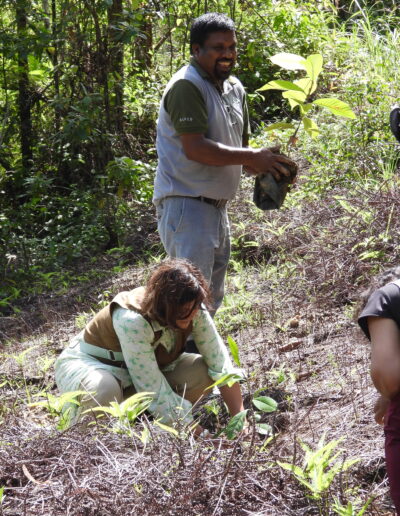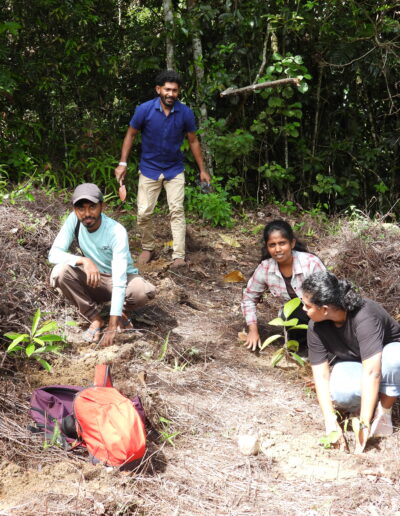SANTED in Udakiruwa
Udukiruwa RainForest
The Udakiruwa Rainforest is a lesser-known yet ecologically valuable tropical rainforest in Sri Lanka, known for its rich biodiversity and pristine natural environment. Located away from more frequented tourist spots, Udakiruwa is a haven for numerous native plant species, insects, birds, and mammals, many of which are endemic to the region. The forest’s dense canopy and humid climate support a complex ecosystem that plays a crucial role in preserving the area’s water cycle and natural habitats. Udakiruwa is an ideal location for ecological research and conservation, offering visitors a tranquil experience amidst lush greenery and diverse wildlife.
Community Engagement
1. Initial awarness programe
The Initial Awareness Programme is designed to introduce the community to key issues, strategies, or projects that are important for collective growth and well-being. In this session, community members gathered to learn about sustainable practices, health initiatives, or social development programs. Through presentations and discussions, participants were encouraged to actively contribute to and understand the impact of community-led initiatives, fostering a sense of ownership and responsibility.
2. Initial Social Survey Programme(field visit on 20th December 2022)
The Initial Social Survey Programme involved a comprehensive field visit conducted on December 20th, 2022. This survey was aimed at assessing the community’s needs, challenges, and resources. Through direct engagement and one-on-one interviews, this program gathered vital information to better understand the community’s socioeconomic conditions, healthcare needs, and environmental concerns. The survey data collected will help shape future programs and ensure they align with the community’s specific needs.
3. Community Engagement workshop series
The Community Engagement Workshop Series offers a platform for community members to participate in skill-building and awareness activities. Each workshop is tailored to address specific topics such as health, agriculture, environmental conservation, or economic development. Through hands-on sessions, discussions, and practical demonstrations, participants gain valuable skills and knowledge, empowering them to improve their livelihoods and contribute to community resilience and sustainability.
Here are some programmes that we organized.
a. Nursery Management Training Programme
b. Bee Keeping Training Programme(Workshop for bee keeping)
c. Peper cultivation management training programme(Peper cultivation Training programme)
Restoration & Conservation Activities
1. Forest restration programme at Udakiruwa Forest
The Forest Restoration Programme at Udakuruwa Forest focuses on revitalizing degraded forest areas to support biodiversity, improve ecosystem services, and promote environmental sustainability. This program involves several activities, including the removal of invasive species, replanting native trees, and implementing soil conservation measures. By restoring these forests, the program aims to rebuild habitats for wildlife, enhance carbon sequestration, and create resilient ecosystems that can withstand climate impacts.
a. Restoration of site – 01 (Alabedda site Preparetion)
The restoration at Site-01 (Alabedda) began with careful site preparation, which included clearing invasive plants and preparing the soil for native tree species. This preparatory stage is crucial for ensuring that new plantings have the best chance of survival and growth. The photos showcase the transformation of the landscape, from cleared areas to the first stages of regrowth, demonstrating the impact of these conservation efforts.
b. ANR Activity – 01 (ANR at Site 02)
The Assisted Natural Regeneration (ANR) activity at Site-02 builds on the natural ability of forests to regenerate. By protecting and managing the natural regrowth of native plants, this approach helps accelerate forest recovery without the need for extensive planting. ANR encourages natural forest succession, leading to improved soil health, water retention, and the restoration of natural habitats. The photos capture various stages of regeneration, from sapling emergence to flourishing green cover, illustrating the effectiveness of ANR in restoring forest health.
2. Community involvement for restoration
The Community Involvement for Restoration initiative seeks to engage local community members and university students in the forest restoration process. By actively participating in planting, maintenance, and monitoring efforts, community members develop a strong connection to the land and a sense of responsibility for conservation. This program not only restores critical habitats but also builds environmental awareness and stewardship among participants.
1. Restoration programme with University Students.
In collaboration with university students, the restoration programme aims to bridge scientific knowledge with hands-on conservation practices. Students contribute by planting native trees, clearing invasive species, and placing protective guards around saplings to ensure healthy growth. These activities are carefully designed to both restore degraded areas and give students practical experience in ecological restoration techniques. The presence of students and community members working together demonstrates the importance of local participation in creating sustainable, long-term environmental change.
Key Activities and Community Engagement
- Tree Planting and Soil Preparation: Community members and students work side-by-side, digging holes, preparing soil, and planting native species. This process helps stabilize the soil, prevent erosion, and support the re-establishment of local biodiversity.
- Protective Measures for Saplings: To safeguard young trees from animals and harsh environmental conditions, participants install protective guards around newly planted saplings. This ensures the plants have the best chance to thrive and grow.
- Monitoring and Maintenance: Regular visits and maintenance are organized to monitor the progress of the restoration sites. By engaging local volunteers in these activities, the program ensures ongoing support for the growth of the forest and keeps the community invested in the health of their environment.
2. Launging the Restoration Activities
3. Educational Programme
1. School Programme
2. Initial Social Survey Programme(field visit on 20th December 2022)
The Initial Social Survey Programme involved a comprehensive field visit conducted on December 20th, 2022. This survey was aimed at assessing the community’s needs, challenges, and resources. Through direct engagement and one-on-one interviews, this program gathered vital information to better understand the community’s socioeconomic conditions, healthcare needs, and environmental concerns. The survey data collected will help shape future programs and ensure they align with the community’s specific needs.
